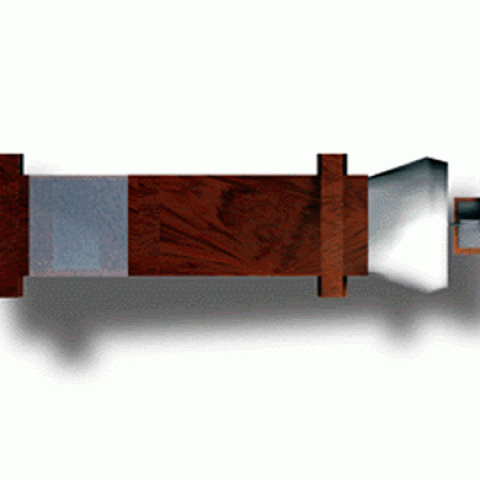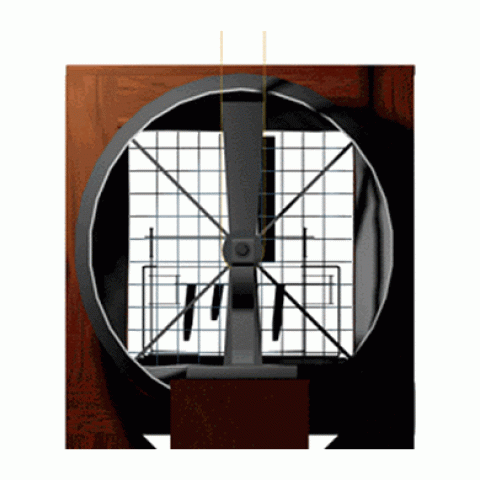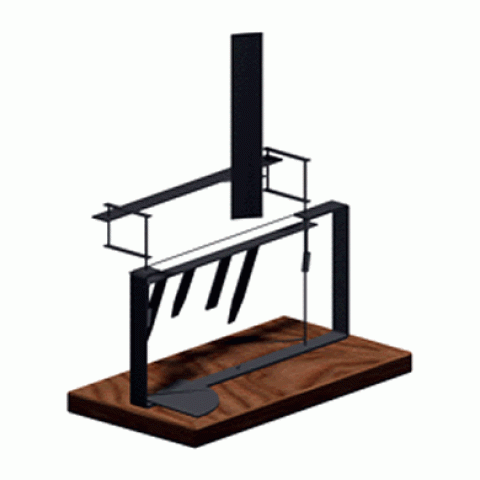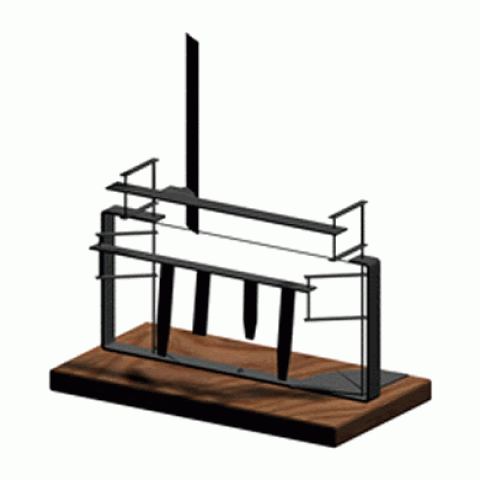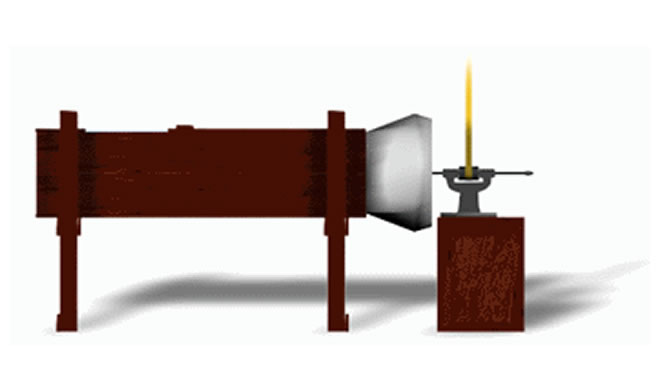
If you like to fly, you owe some thanks to Wilbur and Orville Wright, two hobbyists who became scientists and then achieved first flight. Believe it or not, the Wright brothers credited their success to the investigations that they did in their workshop in Dayton, Ohio, rather than all of their test glides.
In the Fall of 1901, the Wright Brothers decided to begin a "series of experiments to accurately determine the amount and direction of the pressure produced on curved surfaces when acted upon by winds at the various angles from zero to ninety degrees." To do this, they built a wind tunnel.
The original wind tunnel no longer exists, but a replica was built in the 1930s for display in The Franklin Institute's Aviation Hall. The replica was built carefully to match the original dimensions and materials. This model was created using the replica's exact dimensions and specifications.
"We had taken up aeronautics merely as a sport. We reluctantly entered upon the scientific side of it. But we soon found the work so fascinating that we were drawn into it deeper and deeper. Two testing-machines were built, which we believed would avoid the errors to which the measurements of others had been subject."
The tunnel was a long rectangular wooden box with one end open for a fan to make the wind. It was six feet long, sixteen inches wide, and 16 inches deep. They put a pane of glass in the topside of the box so that they could see inside. The fan had two blades and was powered by a belt and pulley system attached to the ceiling. The air from the fan blew at twenty-five to thirty-five miles per hour and passed through a metal grid which straightened it.
Inside, on the floor of the box, they attached two balances which were made from broken hacksaw blades, bicycle spokes,and scrap metal. One balance measured lift while the other measured the ratio of lift to drag. Above is a model of the original balance from two points of view.
They then attached horizontal planes to the balance to test how they behaved in the wind. These horizontal planes, called airfoils, were miniature models for full-sized airplane wings. The brothers made the airfoils from twenty-gauge steel and hammered them into shape. Wilbur once wrote, "With a pair of tin shears, a hammer, a file, and a soldering iron, you can get almost any shape you want."
They made hundreds of tests in the wind tunnel, recording all of the measurements precisely. They used the back of scrap pieces of wallpaper to record data and then filled page after page of their notebooks with precious information.
Within a few months, the Wrights had the world's best collection of lift data. Years later, Orville reflected on the wind tunnel experiments and said, "I believe we possessed...more data on cambered surfaces, a hundred times over, than all of our predecessors put together."
Note: The rendered images above are ©The Franklin Institute. All rights are reserved.


